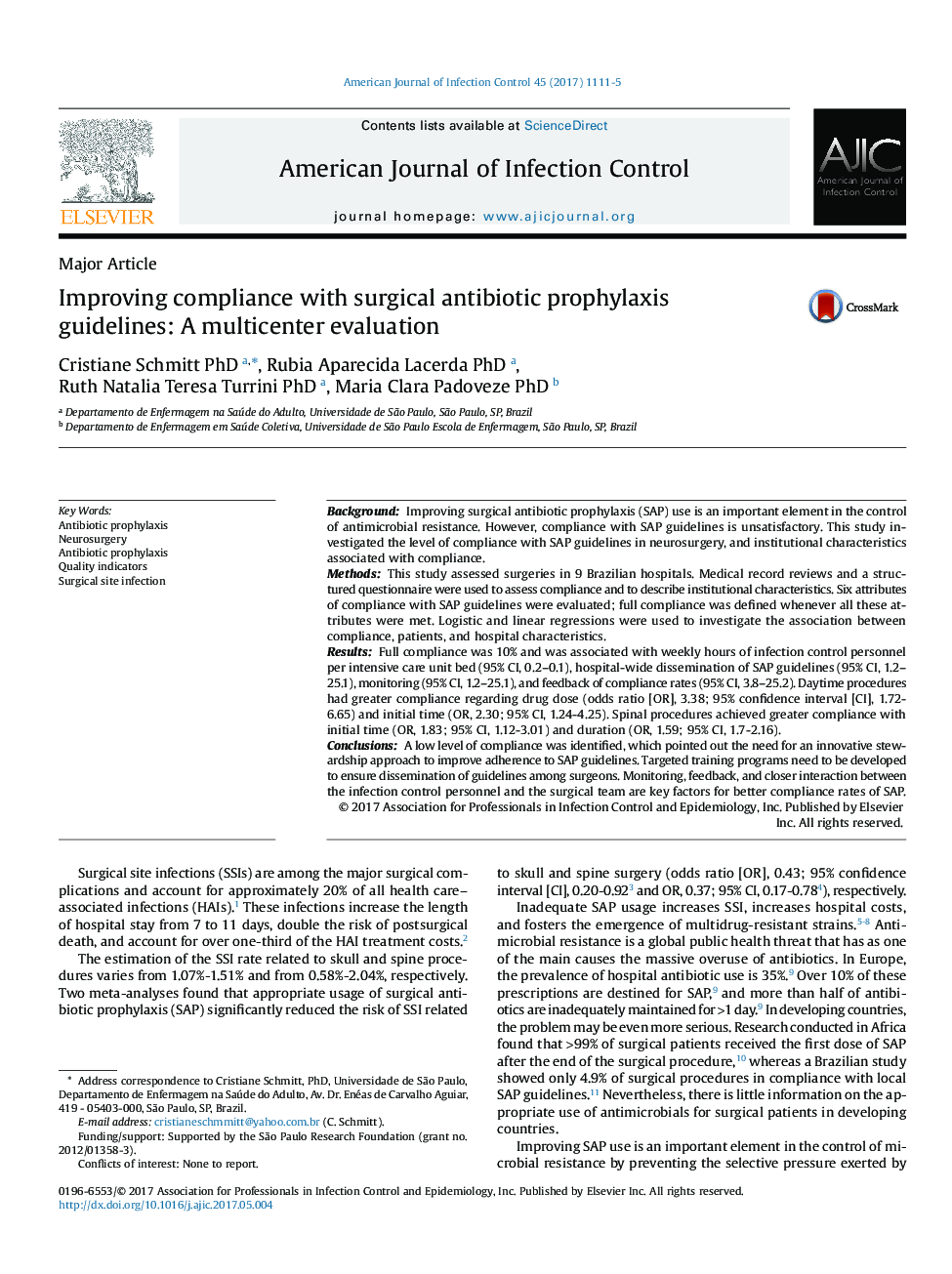| کد مقاله | کد نشریه | سال انتشار | مقاله انگلیسی | نسخه تمام متن |
|---|---|---|---|---|
| 5566174 | 1563439 | 2017 | 5 صفحه PDF | دانلود رایگان |
- Compliance with surgical antibiotic prophylaxis (SAP) was associated with weekly hours of infection control personnel per intensive care unit bed, hospital-wide dissemination of SAP guidelines, monitoring, and feedback of compliance rates.
- Daytime procedures had greater compliance regarding drug dose and initial time.
- Monitoring and feedback and closer interaction between the infection control personnel and the surgical team are key factors for better compliance rates of SAP.
- An innovative stewardship approach is needed to improve adherence to SAP guidelines and targeted training programs to ensure dissemination of guidelines among surgeons.
BackgroundImproving surgical antibiotic prophylaxis (SAP) use is an important element in the control of antimicrobial resistance. However, compliance with SAP guidelines is unsatisfactory. This study investigated the level of compliance with SAP guidelines in neurosurgery, and institutional characteristics associated with compliance.MethodsThis study assessed surgeries in 9 Brazilian hospitals. Medical record reviews and a structured questionnaire were used to assess compliance and to describe institutional characteristics. Six attributes of compliance with SAP guidelines were evaluated; full compliance was defined whenever all these attributes were met. Logistic and linear regressions were used to investigate the association between compliance, patients, and hospital characteristics.ResultsFull compliance was 10% and was associated with weekly hours of infection control personnel per intensive care unit bed (95% CI, 0.2-0.1), hospital-wide dissemination of SAP guidelines (95% CI, 1.2-25.1), monitoring (95% CI, 1.2-25.1), and feedback of compliance rates (95% CI, 3.8-25.2). Daytime procedures had greater compliance regarding drug dose (odds ratio [OR], 3.38; 95% confidence interval [CI], 1.72-6.65) and initial time (OR, 2.30; 95% CI, 1.24-4.25). Spinal procedures achieved greater compliance with initial time (OR, 1.83; 95% CI, 1.12-3.01) and duration (OR, 1.59; 95% CI, 1.7-2.16).ConclusionsA low level of compliance was identified, which pointed out the need for an innovative stewardship approach to improve adherence to SAP guidelines. Targeted training programs need to be developed to ensure dissemination of guidelines among surgeons. Monitoring, feedback, and closer interaction between the infection control personnel and the surgical team are key factors for better compliance rates of SAP.
Journal: American Journal of Infection Control - Volume 45, Issue 10, 1 October 2017, Pages 1111-1115
